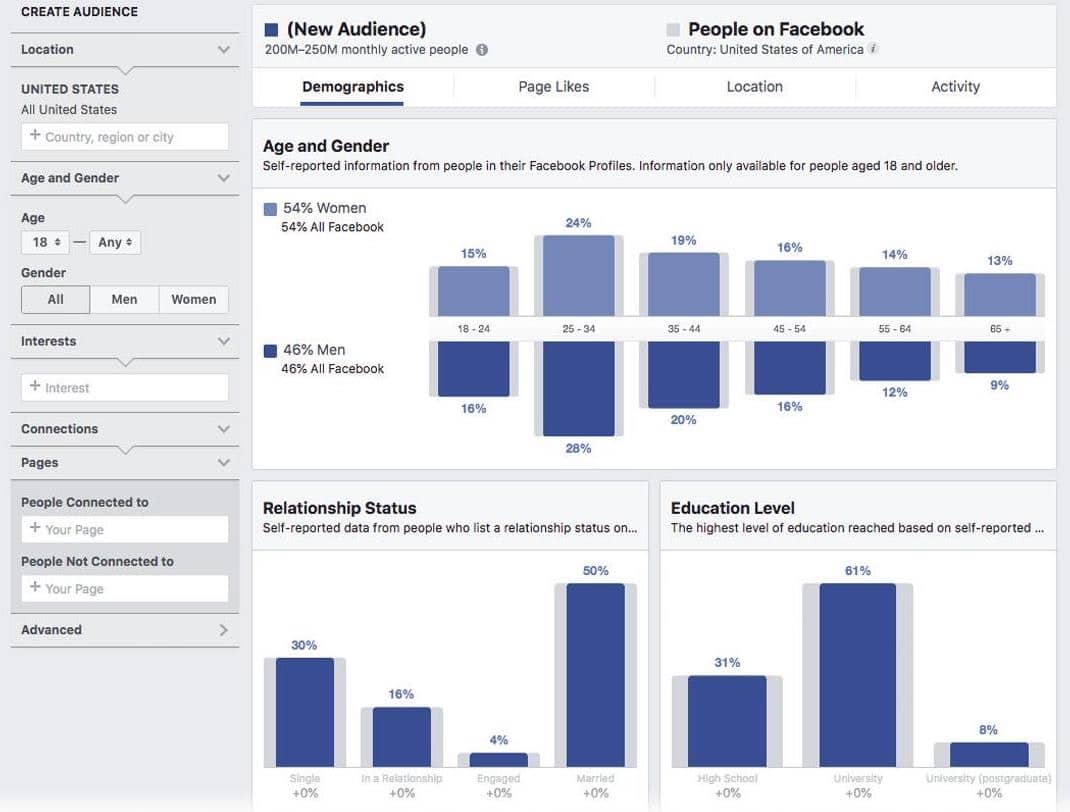Do you know exactly how big the market is for your e-commerce business?
What about the socio-economic, geographical and internal composition of your ideal customer base?
If you answered “no” to any of these questions…
You’re not alone!
E-commerce market research is one of the most important aspects of a successful go-to-market strategy.
But many companies don’t do the work (and end up paying for it in the long run).
In this article, I’m going to show you how to carry out detailed e-commerce market research for your business, product or idea.
This guide will not only provide you with the method you’ll need to make a success of your e-commerce market research, but also the practical tools you can use to make the process easier.
What is e-commerce market research?
There are hundreds of definitions of what e-commerce market research really is and how it can help your online business.
But market research doesn’t have to be complicated.
Ultimately, it’s about finding out exactly what your customers want from you. Market research enables you to understand, both qualitatively and quantitatively, why your ideal customers would want to buy your products.
 First of all, it’s important to understand that there are two types of search, and dozens of tools to help you in your search.
First of all, it’s important to understand that there are two types of search, and dozens of tools to help you in your search.
- Primary research : The data and information you collect yourself.
You control and own the collection method as well as the data itself. - Secondary research : The data or information you gather from existing sources.
You can analyze the data in any way you like, but the information is also available to other people (and your competitors). - Tools : Anything you use to collect, collate, organize and analyze data and information through primary or secondary research.
Examples include surveys, focus groups, interviews, observations, publications, magazines, government reports, institutional research, and more.
The purpose of gathering in-depth information is to help you make better decisions.
You should carry out market research if :
- You’re starting an e-commerce business.
- You launch a new product in your store.
- You’re looking to increase your sales and revenues.
- You would like to complete your offer with additional services.
- You want to change the price of your products.
- You want to expand internationally.
Let’s take a closer look at how to do e-commerce market research the right way, and how to apply it to your business.
Step 1 of e-commerce market research: Analyzing your industry
The ideal industry market research report should ultimately enable you to describe your industry’s current size, growth rate and trends.
This is the simplest of the three steps, as there are hundreds of studies and articles published online on specific industry sizes, growth rates and trends every year.
Google search
Google is a great place to start your research.
The search engine allows you to obtain market data or surveys on your industry or business idea before you launch.
With just a few quick searches, you can get an instant view of the market opportunity for your idea, which will help justify or reject your proposed product.
For example, you could type in “Women’s fashion e-commerce market trends”.
Try to refine your search as much as possible to find specific data. 
Identifying trends
Another interesting Google tool you can use is Google Trends.
Do a search for a product or business idea, then view the demand trend for that keyword over the last few years.
You can also compare the volume of searches between a few terms, geographical locations and even see how particular events affect search popularity.
Perform a keyword search
Looking for a super easy, fast and free way to get an idea of the demand for your product?
The Google Keyword Planner helps you visualize how many people are searching for your company or product idea over a given period of time.
An added bonus is that this tool will provide you with various related keywords that can help you generate ideas for:
- your product name,
- your product sheets,
- your blog posts,
- etc…
By doing keyword research, you’ll know what consumers are looking for all over the world.
If no one is searching for what you want to sell, that’s not a good sign.
On the other hand, if thousands of searches are being carried out for keywords closely related to your product, you can move on to the next stage with confidence.
Now that we know there’s a market for your product, it’s time to find out exactly who your ideal customers are, where they are and what makes them buy.
Step 2 of e-commerce market research: Understanding your target customer
Once you have a solid understanding of the size of your industry and its key trends, it’s time to do some very important consumer research.
This involves understanding the socio-economic, geographic and internal make-up of your ideal customer base.
Here’s how to find that information.
Examine social networks
Examining social networks is a great way to understand the volume of conversations and mentions around your business idea.
Social networks also help uncover aspects of your target market that can inform your marketing efforts later. 
Consumer surveys
There’s absolutely no better way to understand your ideal customer than to ask the people who will actually buy your product.
Start with relevant online forums, Facebook groups, social networking channels, or even people in your direct network.
Join as many relevant groups or forums as you can, and ask each administrator if they’re willing to share your survey.
There are many free tools you can use to conduct customer surveys, such as Google Forms. Or, if you want to broadcast the survey to a wider audience, you can pay for a service like Google Surveys, which also allows you to target specific user segments for more precise information. Your survey should ask your target customer questions such as: age, city, income, favorite brands and colors, where they shop, etc…. The more you know, the better!
Consumer reports
Consumer reports will help you supplement any primary research you do with consumer surveys, and provide you with a general overview of the buying behavior of your target customers.
Again, the key is to be as specific as possible in your online research.
Instead of searching for a term like “women’s buying trends”, try searching for something like “women’s buying behavior in 2019”.
Facebook audience overview
Probably the most underrated e-commerce market research tool is Facebook Audience Insights.
If you have a Facebook Business Page, you can use their free audience analysis tool to understand who your followers are.
The tool provides useful information such as their age, income, lifestyle (as determined by Facebook), spending behavior, and more.
Location information is particularly useful for physical businesses. 
Be patient, be precise and follow every lead!
Step 3 of e-commerce market research: Analyze your competition
The absence of competition in a given market segment is often seen as a positive factor by entrepreneurs, offering them a clear and direct path to success.
However, this belief is as damaging as it is mistaken.
Entrepreneurs who have no competition should beware.
Rather than being a strength, the absence of competition in your market may be the sign of a serious weakness: a market segment that’s too narrow, or the fact that the market isn’t yet ready for your product…
If competition is fierce, consider researching your competition a necessary and vital part of your e-commerce market research.
Here’s how to analyze your competition.
Making a list
You’ll probably find brands similar to yours on Google or Amazon.
Identify as many of your competitors as possible.
Then consider using a spreadsheet to record your findings, including: company name, location, product list, strengths and weaknesses.
Examine competitor sites
This step involves surveying your competitors’ online shopping experience to assess their performance and how they interact with their audience.
Here are a few points to analyze in particular:
- product photos and detailed descriptions,
- calls to action on their website,
- collecting e-mail contacts,
- ease of navigation on their website and social networking pages,
- optimization for mobile devices,
- the extent of their customer service,
- the presence of a blog,
- the success of their up-selling and cross-selling activities,
- emergency techniques,
- management of abandoned baskets,
- etc…
It’s valuable information that will help you position your company in a competitive market and assess the areas you can work on.
Check prices
A good way to set your initial prices and distinguish yourself from the competition is to check the prices you charge.
You’ll find out what your target market is willing to pay, but you shouldn’t feel pressured to undercut them.
It’s not always in your interest to be the cheapest brand in a competitive sector.
Keep an eye on your margins and recognize your value when determining what’s profitable for your business.
Analyze delivery
This goes hand in hand with checking prices, and is an excellent way of gathering information on how your competitors handle shipping.
It’s important to be aware of the influence of shipping costs, and the essential role they play when consumers choose between two brands. 
Nevertheless, while free shipping is known to be a powerful sales driver, it’s certainly not the only solution when developing a competitive analysis strategy.
If you’re not in a position to offer free delivery, consider other options that will set you apart from your competitors, such as a handwritten thank-you note, a small free gift or a loyalty card that invites a privileged relationship with your customer.
Read comments
It’s obvious, but customer testimonials are one of your best sources of competitive intelligence.
Product review sites, social networks and community forums have become public platforms where customers discuss everything from the product to its packaging and delivery experience!
It’s a fascinating space in which to identify areas in which your company can capitalize.
Examine social networks
We’ve talked about it before, but analyzing your competitors’ social networks is one of the quickest ways to establish whether there’s a market for your product or service.
Simply check out your competitors’ followers and their engagement.
If engagement seems low, this could indicate that the market isn’t very active, but it could also show that there’s room for a more innovative brand.
Look at all social platforms, including Facebook, Twitter, Instagram, Pinterest, LinkedIn and Snapchat.
If your competitors are absent from some, this could be an opportunity for your company to stand out.
Last step: Get started!
Have you completed your e-commerce market study and are you ready to launch your online store?
Get in touch with me today. As a Prestahop and Woocommerce developer, I’ll be happy to advise you on how to set up your e-commerce store.



